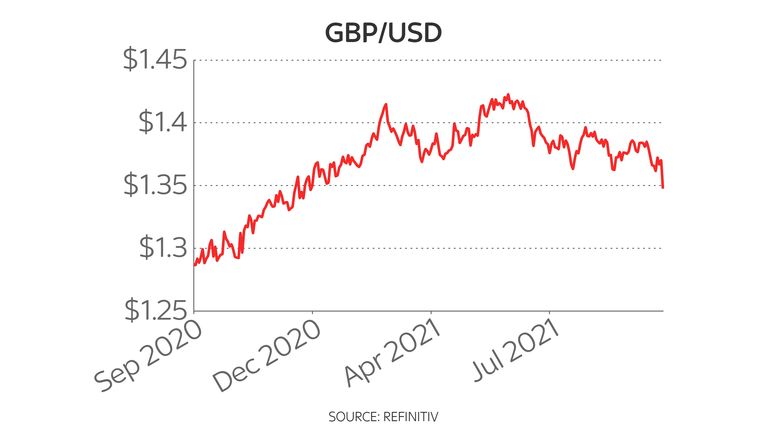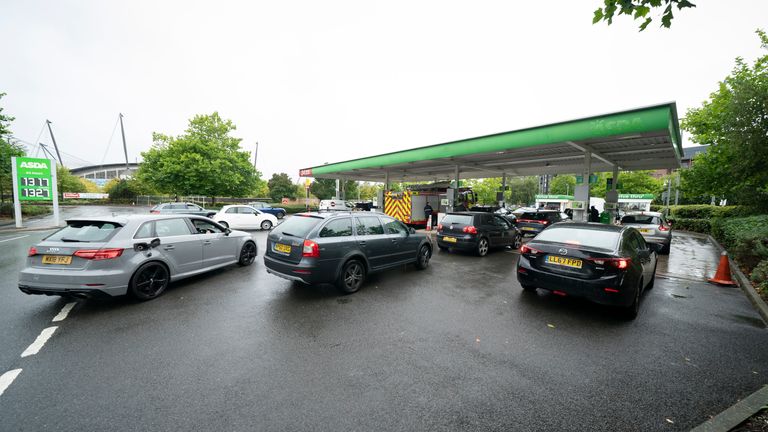Pound at eight-month low as ‘stagflation’ crisis fears take hold
The pound has come under pressure as fears over “stagflation” stalk the economy amid a supply chain crisis and surging energy prices.
Sterling dipped below $1.35 to hit a fresh eight-month low against the US dollar on Wednesday.
“Stagflation” describes a period when an economy experiences stagnant growth and high inflation at the same time.
The pound has weakened from over $1.37 since the start of the week, during which scenes of panic-buying at petrol pumps have become the latest manifestation of the UK’s supply chain crisis, centred on a lack of HGV drivers.
Sterling had been trading at above $1.42 in June but has now fallen to levels last seen in January.
It comes at a time when high oil and natural gas prices caused by a confluence of global factors look set to hit consumers just as the economy’s recovery from the COVID-19 crisis weakens.
Bank of England (BoE) governor Andrew Bailey warned earlier this week that the recovery was entering “hard yards”.
Inflation recently hit its highest level for nine years and the Bank predicts it will soon head above 4%, while monthly growth figures showed economic growth almost ground to a halt in July.
New BoE borrowing figures published on Wednesday showed a relatively small uptick of £351m in consumer credit – covering the likes of credit cards, personal loans and motor finance – in August.
The level of such lending overall remains 2.4% lower than it was a year earlier, suggesting that households remained cautious about splashing out over the summer.
Meanwhile, data from the British Retail Consortium (BRC) showed a run of more than two years in which shop prices have been falling looks set to end over coming months as inflationary pressures take their toll.
It pointed to higher transport costs, labour shortages, Brexit red tape and commodity price rises starting to feed through to consumers.
Overall shop prices this month were 0.5% lower than last year though food ticked 0.1% higher – the first rise in six months – and some goods, such as DIY and gardening products, were seeing the highest level of inflation since 2018.
Elsewhere, a survey from Scottish Widows found that UK households had grown gloomier over the last three months as the post-lockdown recovery began to subside and prices climbed.
The darkening picture poses a quandary for the Bank of England on whether it can raise interest rates to head off the threat of inflation if that risks dampening growth even further.
At the same time the US Federal Reserve has recently signalled that it is closer to pulling the trigger on a move away from the ultra-low rate and multi-billion dollar bond purchasing policies that have cushioned the economy during the pandemic.
Susannah Streeter, senior investment and markets analyst at Hargreaves Lansdown, said: “Fears of stagflation are stalking the financial markets with the fuel and wider supply chain crisis threatening to slow recovery as businesses grapple with the ogre of sharply rising prices.
“The worry that the UK won’t quickly break free from the constraints caused by driver shortages and the bottlenecks of goods and raw materials has seen the pound struggle to recover from its slide against the dollar.”
Source: Read Full Article

